Adopting eco-friendly habits can help reduce your carbon footprint and contribute to a greener and more sustainable lifestyle. By making simple changes to our daily routines and embracing sustainable practices, we can lessen our impact on the environment. Here are some actionable tips and ideas to help you live a more eco-friendly life.
10 Easy Ways to Reduce Your Carbon Footprint

Taking personal action is key to reducing your carbon footprint. By making simple changes in your daily life, you can contribute to a more sustainable and eco-friendly future. Here are 10 easy ways to start making a positive difference:
- Use a reusable water bottle instead of buying plastic water bottles.
- Walk or bike for short trips instead of driving.
- Turn off lights and unplug devices when not in use.
- Keep car tires properly inflated.
- Eat locally grown food and reduce consumption of red meat.
- Use cold water for laundry and line dry when possible.
- Set the thermostat to energy-efficient temperatures.
- Drive efficiently by avoiding rapid acceleration and maintaining a steady speed.
- Reduce landfill waste by selling, donating, and recycling items.
- Use alternative transportation methods, such as public transit or carpooling, at least once a week.
By implementing these simple and practical tips, you can actively contribute to the fight against climate change and live a more eco-friendly lifestyle.
Simple Steps to Reduce Energy Consumption
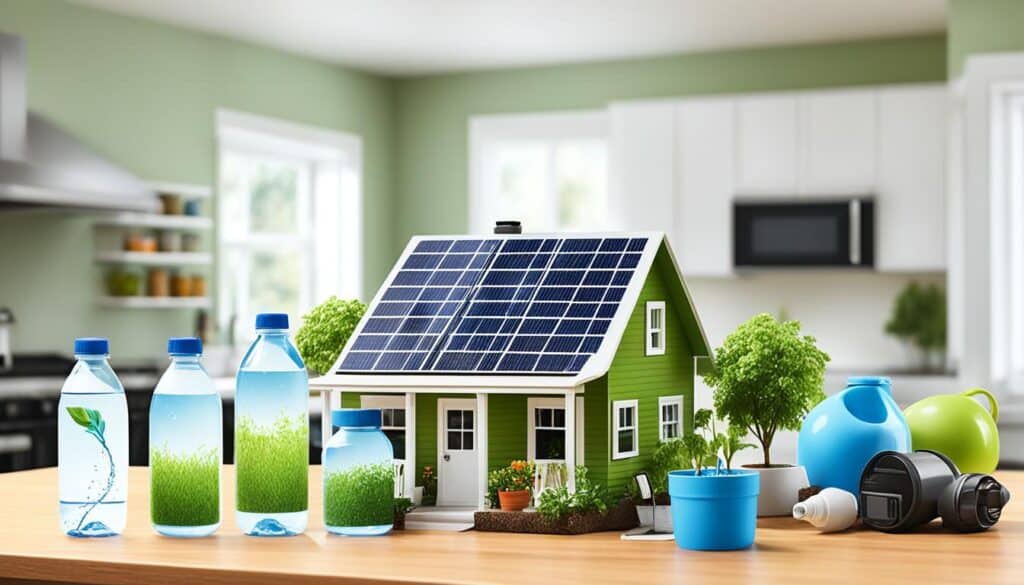
Energy consumption is a major contributor to carbon emissions, but by implementing these simple steps, you can reduce your energy usage and decrease your carbon footprint. Here are some effective strategies to help you live a more sustainable lifestyle:
- Turn off lights: Make it a habit to turn off lights when you leave a room. This simple action can save energy and reduce your carbon footprint.
- Use moderate temperature settings: Adjust your thermostat to energy-efficient temperatures. Lowering the temperature by a few degrees in winter and raising it in summer can make a significant difference.
- Minimize plug load: Unplug devices when they are not in use. Many electronics consume energy even when they are turned off or on standby. Using power strips with an on/off switch can make it easier to shut down multiple devices at once.
- Use power strips to avoid phantom power: Phantom power, also known as standby power, refers to the energy consumed by devices that are plugged in but not in use. Plugging your electronics into a power strip and turning it off when not in use helps prevent unnecessary energy consumption.
- Power down electronics: Completely power down computers, televisions, and other electronics when they are not being used. Leaving them in standby mode still consumes power.
- Take the stairs instead of using elevators: Opting for the stairs instead of elevators not only saves energy but also promotes physical well-being.
By incorporating these simple steps into your daily routine, you can make a significant positive impact on the environment and reduce your carbon footprint.
Minimizing Waste Production
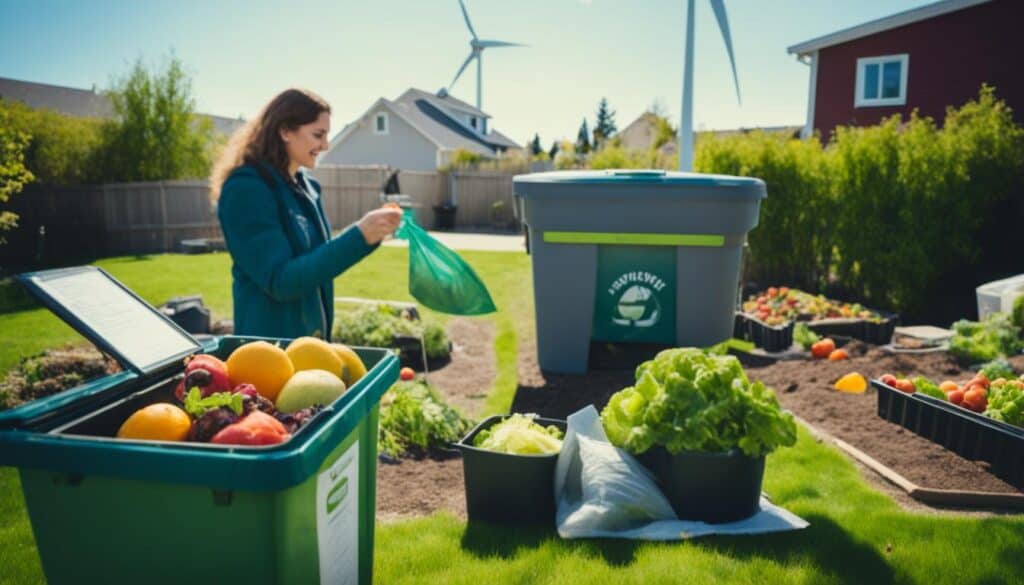
Reducing waste production is not only beneficial for the environment but also plays a significant role in reducing our carbon footprint. By adopting eco-friendly waste management practices, we can contribute to a more sustainable future. Here are some simple tips to help you minimize waste:
- Print double-sided whenever possible to conserve paper.
- Recycle as much as you can to divert waste from landfills.
- Donate or repurpose items instead of throwing them away, promoting reuse.
By incorporating these practices into your daily routine, you can actively participate in the effort to create a greener and more eco-friendly world.
Making Eco-Friendly Purchases

Being conscious of the products you buy can make a difference in your carbon footprint. Opt for products from sustainable brands that use eco-friendly materials and avoid companies that contribute to pollution. By making smart purchasing choices, you can support more environmentally friendly practices and reduce your own impact on the environment.
Here are some tips for making eco-friendly purchases:
- Look for products with eco-certifications or labels that indicate they are made from sustainable materials.
- Choose products that are made to last and have a low environmental impact throughout their lifecycle.
- Avoid single-use plastics by opting for reusable alternatives, such as cloth shopping bags, stainless steel straws, and glass food containers.
- Support local and small businesses that prioritize sustainability in their production processes.
- Consider secondhand or vintage items as a sustainable and unique alternative to purchasing new.
Remember, every purchase you make is an opportunity to vote with your wallet and support eco-friendly practices. By consciously choosing sustainable products, you can contribute to a greener and more sustainable future.
Conducting an Eco-Friendly Home Audit

Reducing your carbon footprint starts with assessing your home through an eco-friendly home audit. By carefully evaluating various aspects of your living space, you can identify areas in need of improvement and implement sustainable changes. From energy consumption to waste production and material usage, thorough examination is key to creating a more environmentally friendly home.
Consider starting with an assessment of your energy consumption. Pay attention to appliances, lighting, windows, and water usage to identify potential areas for improvement. Making simple adjustments, such as switching to energy-efficient light bulbs or installing programmable thermostats, can significantly reduce your overall energy consumption and lower your carbon footprint.
Next, turn your focus to waste production. Evaluate your waste habits and look for opportunities to minimize it. By practicing recycling, composting, and reducing single-use plastics, you can greatly reduce the amount of waste that ends up in landfills. Embracing a sustainable approach to waste management is not only beneficial for the environment but also promotes a more eco-friendly lifestyle.
Lastly, consider the materials used in your home. Are there opportunities to opt for eco-friendly alternatives? For example, when renovating or choosing new furniture, prioritize sustainable materials like reclaimed wood or bamboo. By selecting environmentally conscious options, you can lessen the impact your home has on the planet.
Conducting an eco-friendly home audit empowers you to take a holistic approach to reducing your carbon footprint. By examining energy consumption, waste production, and material choices, you can make informed decisions and create a more sustainable living space.
Assessing Energy Consumption in Your Home
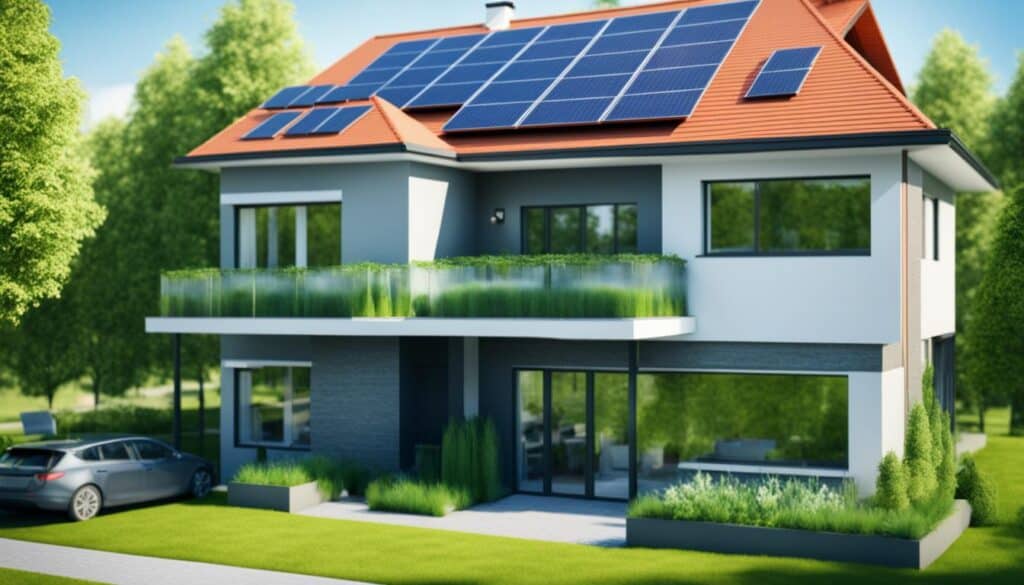
Reducing energy consumption is a vital step in creating an eco-friendly home. By understanding how different aspects of your home contribute to energy usage, you can make informed choices to reduce your overall consumption and lower your carbon footprint.
1. Appliances
Assess the energy efficiency of your appliances, such as refrigerators, washing machines, and air conditioners. Look for energy-saving labels, such as Energy Star, when purchasing new appliances. Consider replacing old, energy-guzzling appliances with more efficient models to significantly reduce your energy consumption.
2. Lighting
Replace traditional incandescent light bulbs with energy-efficient alternatives like LED or CFL bulbs. These bulbs last longer and use significantly less energy, reducing both your energy consumption and electricity bills. Additionally, make it a habit to turn off lights when leaving a room to further conserve energy.
3. Windows and Insulation
Check the insulation around your windows and doors to ensure they are well-sealed and minimize heat transfer. Consider upgrading to energy-efficient windows or installing window film to further reduce heating and cooling energy losses. Proper insulation helps maintain a comfortable indoor temperature and reduces the need for excessive heating or cooling.
4. Water Usage
Conserving water not only helps reduce energy consumption but also supports sustainability efforts. Install low-flow fixtures, such as faucets and showerheads, to minimize water usage without sacrificing water pressure. Repair any leaks promptly to prevent water wastage. Additionally, consider using energy-efficient appliances like dishwashers and washing machines that have water-saving features.
5. Energy Monitoring
Consider installing smart energy meters or using energy monitoring devices to track your home’s energy consumption. By understanding when and where you use the most energy, you can make informed decisions and adjust your habits accordingly. Analyzing your energy usage patterns empowers you to identify areas for improvement and take action to reduce energy waste.
6. Renewable Energy Sources
Explore the possibility of installing renewable energy systems, such as solar panels or wind turbines, to generate clean and sustainable energy for your home. While the initial investment may seem significant, these systems can provide long-term savings on energy bills and significantly reduce your carbon footprint.
By assessing your home’s energy consumption and implementing these strategies, you can make a substantial impact on reducing both your energy usage and carbon emissions. Start with small changes and gradually increase your sustainable practices to create a greener and more eco-friendly living space.
Minimizing Waste in Your Home
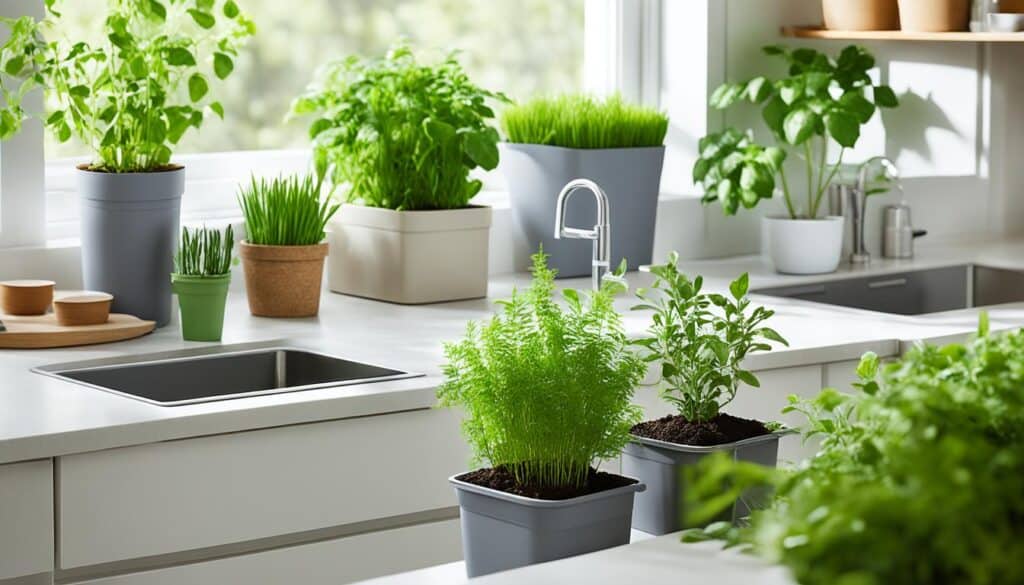
Waste production is a major environmental concern. Reducing waste at home is not only beneficial for the planet but also contributes to a more sustainable lifestyle. By identifying areas where waste is being generated in your home, you can take steps to minimize it and lower your carbon footprint.
1. Reduce Food Waste
One of the significant contributors to household waste is food waste. To reduce food waste, plan meals ahead, make a shopping list, and store perishables properly. Consider composting food scraps for fertilizer instead of throwing them in the trash.
2. Embrace Recycling
Recycling is an effective way to divert waste from landfills and conserve resources. Take advantage of your local recycling programs and ensure that you separate recyclables from regular trash. Remember to rinse containers before recycling them to prevent contamination.
3. Avoid Single-Use Plastics
Single-use plastics, such as water bottles, disposable cutlery, and shopping bags, contribute significantly to waste. Opt for reusable alternatives like stainless steel water bottles, cloth shopping bags, and reusable utensils, reducing the amount of waste generated.
4. Compost Yard and Garden Waste
In addition to food waste, yard and garden waste can also be composted. Collect grass clippings, leaves, and plant trimmings to create nutrient-rich compost for your garden. This helps reduce waste and improves soil health.
5. Repair or Repurpose Items
Instead of automatically disposing of broken or outdated items, consider repairing or repurposing them. With a little creativity and DIY skills, you can extend the lifespan of various items, reducing the overall waste in your home.
By implementing these waste-reducing practices, you can make a tangible difference in minimizing waste at home and living a more eco-friendly lifestyle.
Choosing Sustainable Purchases for a Greener Home

The products and materials you choose for your home play a significant role in shaping your carbon footprint and overall environmental impact. When conducting an eco-friendly home audit, it is essential to prioritize sustainable brands that use eco-friendly materials. By opting for these products, you can contribute to creating a greener and more sustainable living space.
When selecting items for your home, consider the following criteria:
Energy Efficiency
- Look for products that have an Energy Star rating, indicating they meet strict energy efficiency standards.
- Invest in energy-efficient appliances, such as refrigerators, washing machines, and air conditioners, which consume less electricity without compromising performance.
- Choose LED light bulbs, as they have a longer lifespan and use significantly less energy compared to traditional incandescent bulbs.
Durability and Longevity
- Opt for furniture and home accessories made from durable materials, such as solid wood or metal, that can withstand the test of time.
- Invest in high-quality products that are designed to last, reducing the need for frequent replacements.
Minimal Environmental Impact
- Choose products made from natural, sustainable materials, such as bamboo, cork, or reclaimed wood.
- Consider the manufacturing process and select brands that prioritize eco-friendly practices, such as reducing waste and using renewable energy sources.
- Look for certifications or labels, such as Forest Stewardship Council (FSC) certification for wood products, that guarantee environmentally responsible sourcing and production.
Recyclability and Disposal
- Prioritize products that can be easily recycled at the end of their life cycle, reducing landfill waste.
- Consider the disposal process and avoid products with harmful chemicals or components that can negatively impact the environment when discarded.
By deliberately choosing sustainable purchases for your home, you can significantly reduce your carbon footprint and contribute to a more eco-friendly lifestyle. Remember that the small choices you make every day can add up to significant positive change for the planet.
Making Eco-Friendly Upgrades to Your Home
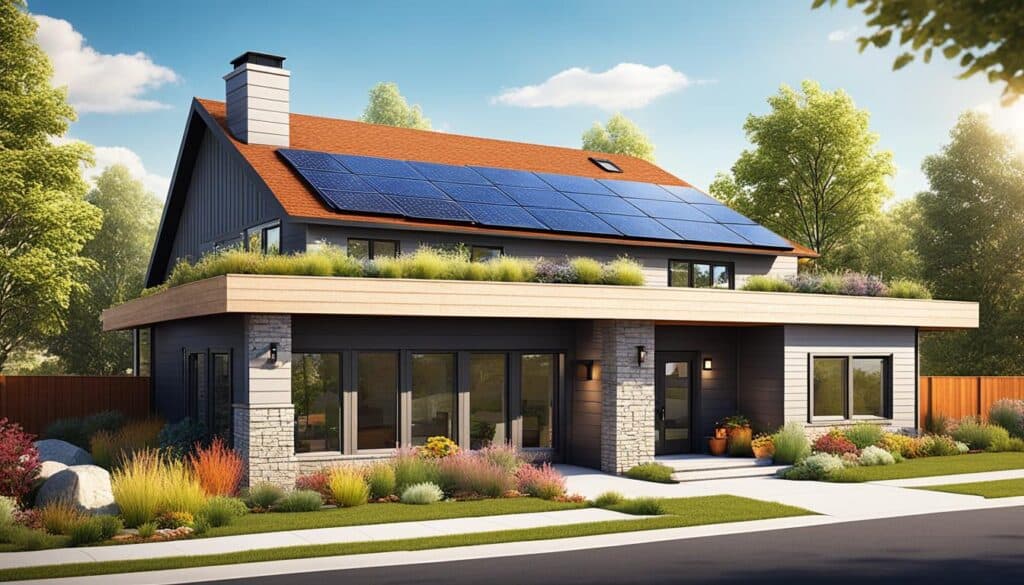
When it comes to reducing your carbon footprint, making eco-friendly upgrades to your home can make a significant impact. By prioritizing energy efficiency and sustainability, you not only contribute to a greener environment but also save money in the long run.
To start, consider installing solar panels on your roof. Solar energy is a clean and renewable source of power that can significantly reduce your reliance on fossil fuels. By harnessing the sun’s energy, you can power your home with a sustainable and eco-friendly solution.
Upgrading your appliances to energy-star certified ones is another eco-friendly home upgrade to consider. Energy-star appliances are designed to minimize energy consumption without compromising functionality. By replacing old, inefficient appliances with energy-star ones, you can reduce your energy usage and lower your carbon footprint.
Improving insulation in your home is also a crucial eco-friendly upgrade. Proper insulation helps retain heat during the winter and cool air during the summer, which means less reliance on heating and cooling systems. By reducing the need for artificial temperature control, you conserve energy and reduce greenhouse gas emissions.
Consider implementing other sustainable practices as well. Install energy-efficient LED bulbs throughout your home to save electricity. Opt for low-flow faucets and showerheads to conserve water. Use eco-friendly materials for any remodeling or renovation projects, such as bamboo flooring or recycled content countertops.
By making eco-friendly upgrades to your home, you take a proactive step towards reducing your carbon footprint. Not only do these upgrades benefit the planet, but they also enhance the comfort and value of your home. So, why wait? Start exploring eco-friendly home upgrades today and contribute to a more sustainable future.
Creating Carbon Offsets with Sustainable Actions

Creating carbon offsets involves taking actions that counterbalance the emissions generated, resulting in a reduction or absorption of carbon. One effective way to contribute to carbon offsets is by making eco-friendly upgrades and changes to your home. By incorporating sustainable renovations, installing solar panels, and adopting energy-efficient practices, you can actively reduce your overall carbon footprint.
When it comes to sustainable renovations, consider opting for materials and products that have minimal environmental impact. Choose energy-efficient appliances and fixtures, and prioritize insulation to improve the energy efficiency of your home. Additionally, installing solar panels can significantly reduce your dependence on traditional energy sources and lower your carbon emissions.
To further offset your carbon footprint, embrace energy-efficient practices in your daily life. This can include using natural light instead of artificial lighting during the day, adjusting your thermostat to optimize energy consumption, and minimizing your use of electronic devices when not in use.
By taking these sustainable actions, you not only reduce your impact on the environment but also contribute to carbon offsets. Each step towards a greener home and lifestyle is a step towards creating a more sustainable future for ourselves and future generations.
An example of carbon offsets in action:
- Through the installation of solar panels, you can generate clean energy for your home, reducing the need for electricity from fossil fuel sources.
- Implementing energy-efficient practices, such as using energy-efficient light bulbs and appliances, can significantly decrease your energy consumption.
- Choosing sustainable materials for home renovations, such as reclaimed wood or recycled materials, helps conserve natural resources and limits greenhouse gas emissions associated with the production of new materials.
- Reducing waste by composting organic matter and recycling can help prevent the release of methane, a potent greenhouse gas, from landfills.
By integrating these sustainable actions into your life, you can make a meaningful difference in offsetting carbon emissions and contribute to a more environmentally friendly future.
Planting a Sustainable Garden
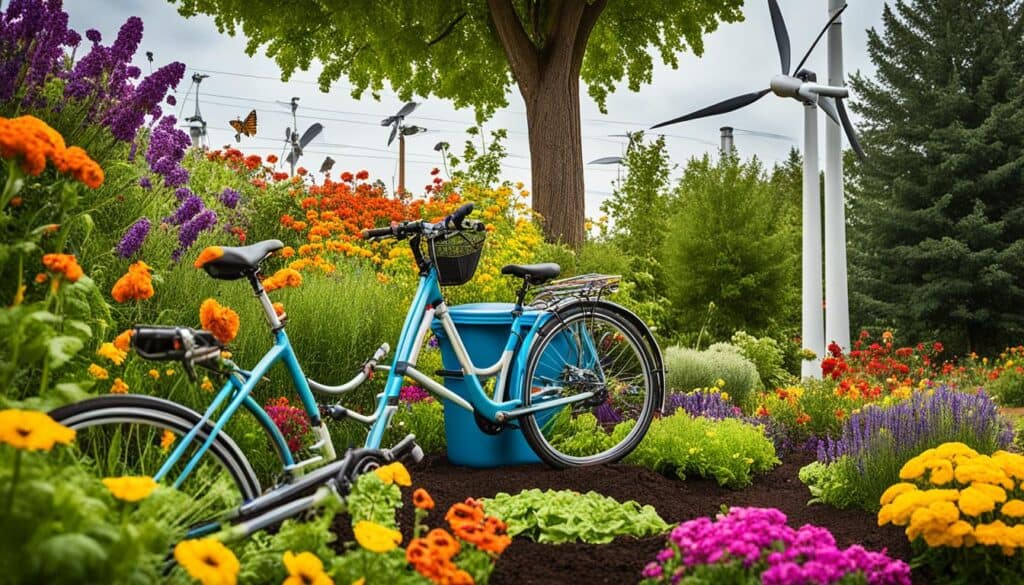
Planting a sustainable garden is a great way to reduce your carbon footprint at home. By growing your own food and herbs, you can lessen your reliance on grocery stores and their carbon-intensive operations. Not only will you have access to fresh and healthy produce, but you will also contribute to a more sustainable and eco-friendly lifestyle.
To start your sustainable garden, consider using organic gardening practices. Avoid the use of synthetic pesticides and fertilizers that can harm the environment and opt for natural alternatives. Composting kitchen scraps and yard waste can provide nutrient-rich soil for your plants, helping them thrive without the need for harmful chemicals.
Choosing Native and Climate-Appropriate Plants
When selecting plants for your garden, choose native species that are adapted to your local climate. Native plants require less water and maintenance, making them an ideal choice for sustainable gardening. Additionally, these plants provide habitat for local wildlife and contribute to biodiversity.
Before planting, research the water needs and sun exposure requirements of the plants you’ve chosen. This way, you can ensure that you are providing the optimal conditions for their growth, minimizing water waste and the need for excessive irrigation.
Conserving Water
Water conservation is essential in sustainable gardening. Implementing water-saving techniques such as mulching, drip irrigation systems, and collecting rainwater can significantly reduce water consumption in your garden. Mulching retains moisture in the soil, prevents weed growth, and regulates soil temperature. Drip irrigation systems deliver water directly to the roots, minimizing evaporation and water loss. Collecting rainwater in barrels provides a free and sustainable water source for your plants.
Growing Food and Herbs
Growing your own food and herbs is not only rewarding, but it also reduces the carbon footprint associated with transportation and packaging. Choose crops that are well-suited to your climate and grow well in your garden. Consider the space requirements and the yield of each plant to optimize your garden’s productivity.
The use of natural pest control methods, such as companion planting and beneficial insects, can help manage pests without the need for harmful chemicals. Research which plants repel or attract specific insects to create an eco-friendly pest management strategy.
By practicing sustainable gardening, you are not only creating a beautiful and productive space but also making a positive impact on the environment. Embrace the opportunity to connect with nature, reduce waste, and promote a more sustainable and eco-friendly home.
Taking Time for an Eco-Friendly Home Audit

Conducting an eco-friendly home audit can play a vital role in reducing your carbon footprint and embracing a more sustainable lifestyle. Though it may seem overwhelming, taking it one step at a time will yield significant results. By carefully evaluating and making changes to various aspects of your home, you can create a better future for both yourself and the environment.
Every small change you make contributes to a positive impact on the planet. So, take your time to assess your energy consumption, waste production, and the materials used in your home. Seek areas where improvements can be made, and gradually implement sustainable practices that align with your eco-friendly aspirations.
Remember, even minor adjustments such as switching to energy-efficient light bulbs or reducing water usage can have a substantial collective effect. By conscientiously nurturing an eco-friendly home environment, you can reduce your carbon footprint and inspire others to follow suit.
While conducting your eco-friendly home audit, consider the importance of a greener lifestyle that preserves the Earth’s resources for future generations. By prioritizing sustainable choices and making gradual changes, you can make a positive impact on the environment and create a more eco-friendly home.
Take the first step towards a greener future by conducting an eco-friendly home audit today.
Image: Eco-Friendly Home Audit
- Evaluate your energy consumption
- Assess waste production in your home
- Choose sustainable materials and products
- Consider eco-friendly home upgrades
- Reduce water and electricity usage
- Minimize single-use plastic
- Optimize heating and cooling systems
- Implement recycling and composting practices
- Support local and sustainable businesses
- Encourage eco-friendly habits among family members
Embracing an Eco-Friendly Mindset

Embracing an eco-friendly mindset is crucial for reducing your carbon footprint. By adopting an eco-friendly mindset, you can make sustainable living a core part of your daily life. It starts with being mindful of your daily choices and continuously seeking ways to minimize your impact on the environment.
Here are some key ways to develop an eco-friendly mindset:
- Practice responsible consumption: Consciously choose products and services that align with eco-friendly values. Prioritize durable and sustainable options over disposable or single-use items.
- Reduce, reuse, recycle: Embrace the concept of the 3Rs in your daily life. Minimize waste by reducing unnecessary purchases, reusing items whenever possible, and recycling materials that can be repurposed.
- Conserve energy: Make a habit of turning off lights and unplugging electronic devices when not in use. Opt for energy-efficient appliances and seek ways to reduce your energy consumption at home.
- Choose sustainable transportation: Whenever feasible, opt for eco-friendly modes of transportation like walking, cycling, or using public transit. Carpooling and combining errands can also help reduce your carbon footprint.
- Support eco-conscious brands: Research and choose products from companies that prioritize sustainability and ethical practices. Look for certifications such as Fair Trade, organic, and cruelty-free labels.
By embracing an eco-friendly mindset, not only can you lead a more sustainable life, but you can also inspire and encourage others to do the same. Together, we can make a significant impact in reducing carbon emissions and preserving the health of our planet for future generations.
Conclusion: Committing to an Eco-Friendly Lifestyle
Committing to an eco-friendly lifestyle is more important than ever. By making conscious choices and adopting sustainable practices, we can reduce our carbon footprint and contribute to a greener and more sustainable future. It starts with small steps, such as using reusable water bottles, walking or biking instead of driving for short trips, and turning off lights and unplugging devices when not in use.
Other impactful actions include eating locally grown food and reducing red meat consumption, using cold water for laundry and line drying when possible, and setting our thermostat to energy-efficient temperatures. Making these changes not only benefits the environment but also promotes a healthier and more sustainable way of living.
Remember that every action counts, no matter how small. By embracing an eco-friendly mindset and encouraging others to do the same, we can create a ripple effect that leads to positive change. Let’s commit to an eco-friendly lifestyle and work together to make a significant impact in reducing our carbon footprint. The future of our planet depends on it!
 Fullersears
Fullersears





